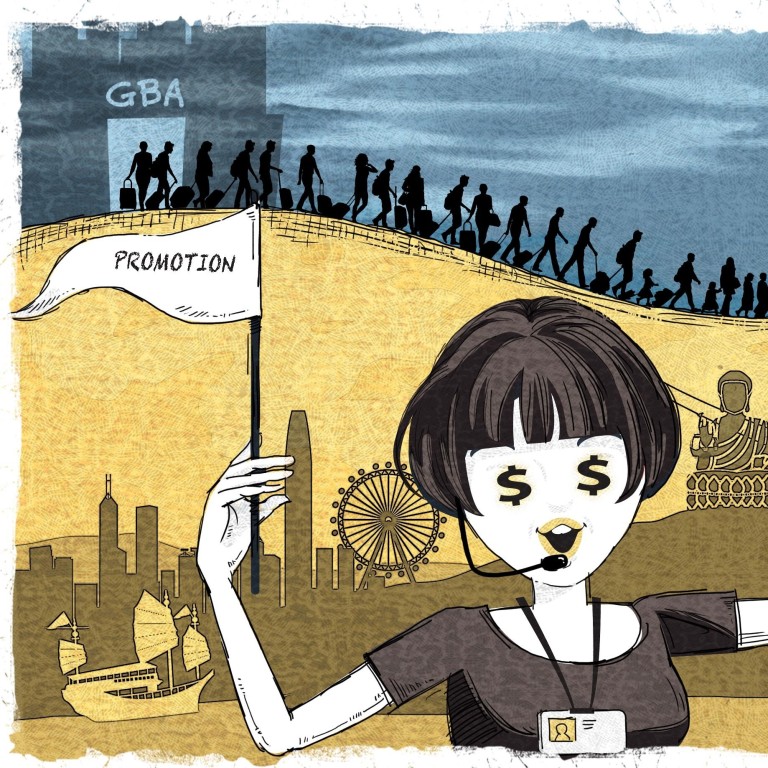
Greater Bay Area: Hong Kong’s stricken tourism industry cannot wait for mainland visitors to return, but will they come back?
- With global travel shaken by coronavirus, mainland China is main hope of reviving city’s tourism
- Hong Kong’s new Covid-19 infections get in the way of reopening border with Guangdong
As Hong Kong tries to reboot its economy amid the coronavirus pandemic, can the Greater Bay Area provide opportunities that are ripe for the taking? In the final of a three-part series ahead of the city leader’s policy address, Denise Tsang and Kathleen Magramo look at how mainland visitors could revive the battered tourism industry. Read the first and second part of the series here.
Ngong Ping 360 has been a sad sight for most of this year. Its famous cable cars have been mostly empty going up the slopes of Lantau Island, taking few visitors to the giant Buddha statue at the top.
The attraction’s managing director, Andy Lau, said half in jest there had been days when only falling leaves and his 300 staff had shown up.
“Without [travel health codes] in place, the Greater Bay Area is just talk for now, and the tourism industry cannot move forward
Lau is counting on mainland visitors returning, and Ngong Ping 360 has made sure to maintain its presence on popular mainland social media such as TikTok and Xiaohongshu.
“We are preparing product plans and marketing campaigns to roll out when the border reopens,” he said. “The Greater Bay Area [GBA] is our focal market and first priority.”
The GBA comprises Hong Kong, Macau and nine cities in Guangdong province with a combined population of 71.2 million. Beijing’s plan is to transform this southern region into a high-technology powerhouse to rival California’s Silicon Valley by 2035.
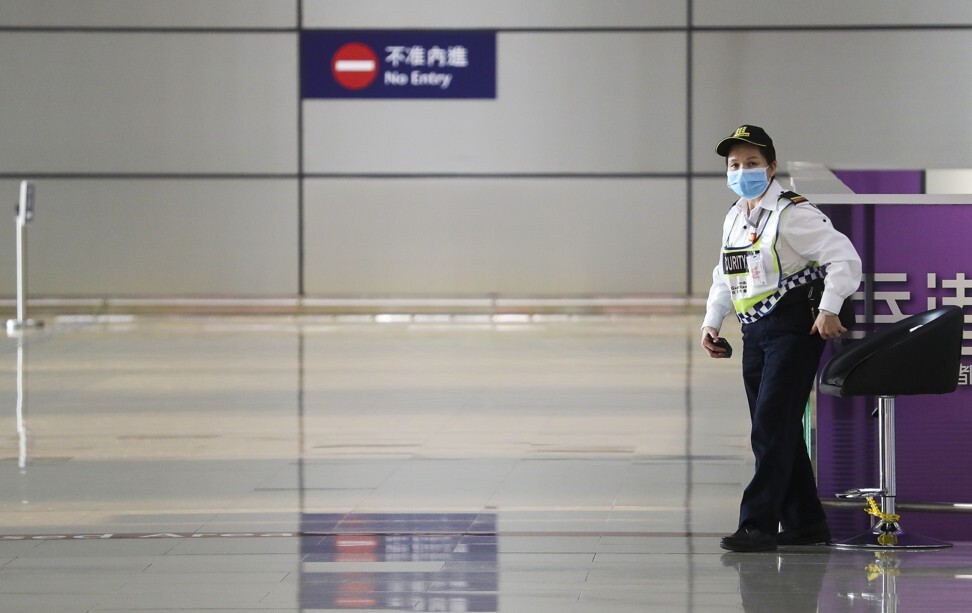
Entrepreneur Allan Zeman, a member of Lam’s Council of Advisers on Innovation and Strategic Development, expects the GBA to be a highlight of the speech.
“The Greater Bay Area development is Hong Kong’s ‘second beginning’ after the handover in 1997,” said Zeman, founder of the Lan Kwai Fong entertainment area. “Of the 11 cities, Hong Kong has the international flavour. If the development gets moving, Hong Kong’s importance will be invaluable.”
Is Greater Bay Area the ticket to beat Hong Kong’s land, housing woes?
High-speed trains now connect West Kowloon to Shenzhen in only 14 minutes, and Guangzhou in 46 minutes. The Hong Kong-Macau-Zhuhai bridge has slashed travel time by car between Hong Kong Central and Macau and Zhuhai to an hour. Multiple daily flights go between Hong Kong and Shenzhen and Guangzhou.
The combined gross domestic product of the 11 cities was US$1.6 trillion in 2018, or 12 per cent of China’s total GDP, according to a joint survey by KPMG, HSBC and the Hong Kong General Chamber of Commerce.
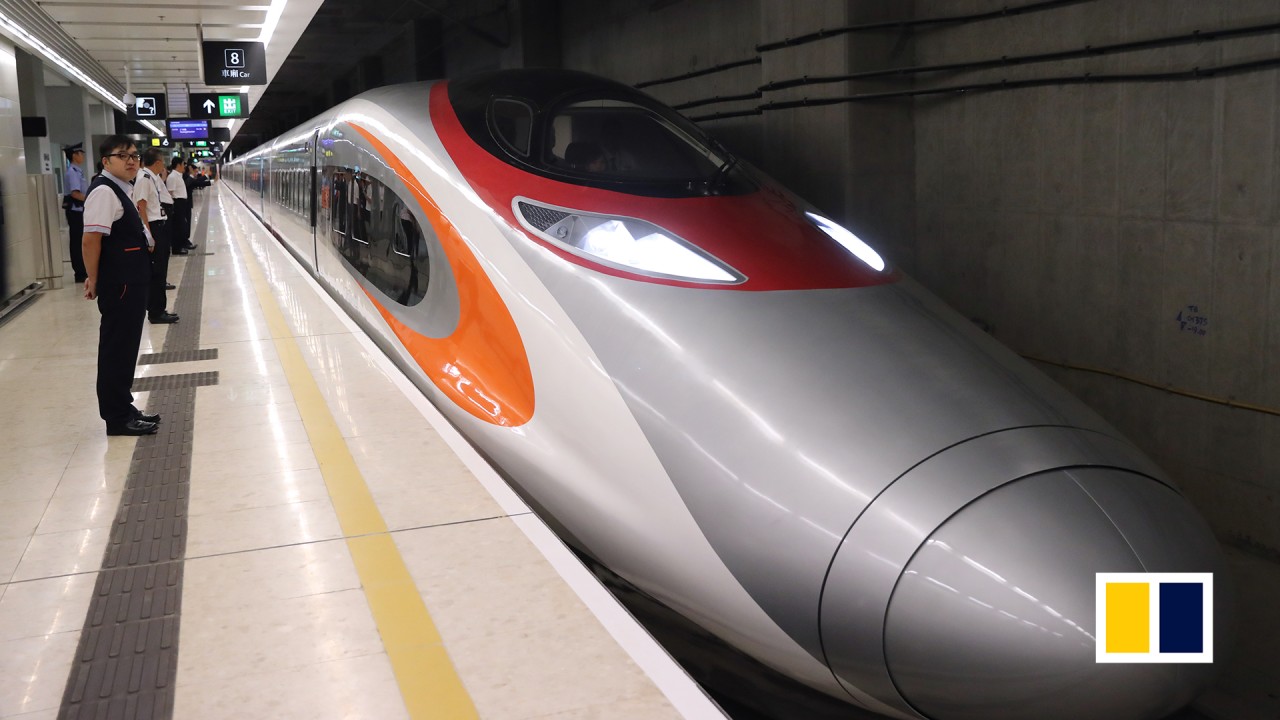
05:28
Is Hong Kong’s high-speed railway the fastest way from A to B? We’re putting it to the test
Mainland links: the only way out for Hong Kong?
Although the bill was eventually withdrawn, the unrest continued, marked by increasing vandalism and violence as radicals clashed with police.
Have Chinese tourists ever really been welcome in Hong Kong?
Zeman said the GBA offered Hong Kong an immediate way to reboot its economy, given escalating tensions between China and the United States as well as Britain, Canada, Australia and New Zealand.
“The US tries to attack China by using Hong Kong as a pawn,” he said. “As China reduces its reliance on exports and overseas markets by growing its self-sufficient domestic market, the Greater Bay Area is the only way out for Hong Kong.”
The Hong Kong General Chamber of Commerce, the city’s largest business group, agrees the GBA presents a major opportunity for future growth.

He suggested raising the daily limit of 10,000 private cars allowed to use the Hong Kong-Zhuhai-Macau Bridge and having a special visa arrangement for selected groups of GBA residents to enter Hong Kong for work or business.
“This system could also cover tourism, to allow overseas visitors to travel freely within cities in the Greater Bay Area,” he said.
Leung felt Hong Kong, with the best-connected international airport, could position itself as the launching pad for exploring Macau, Guangzhou and other GBA destinations, targeting long-haul tourists who tend to spend more.
Hong Kong suffers HK$2 billion in lost tourism revenue for ‘golden week’
“We can get very creative in designing itineraries that encourage multi-visits to coincide with mega events taking place in Hong Kong,” he said.
But Leung also said Hong Kong should consider the kind of visitors it hoped to attract, saying: “Do we want to rebuild our battered tourism industry by focusing on high-yield tourists from the Greater Bay Area? Or do we want to return to quantity over quality?”
‘Extraordinary offers’ to welcome visitors
For several years now, mainlanders have been the largest group of visitors to Hong Kong, and accounted for about 80 per cent of all visitors in 2018 and last year.
An all-time high of 51 million mainlanders arrived in 2018, when Hong Kong tourism scored a record 65.14 million visitors.

Mainlanders were on track to set yet another record last year, with 27.55 million arriving from January to June, but as anti-government protests continued, their number fell to 16.17 million in the second half of the year.
Hong Kong’s hotels, attractions, shopping malls and tour guides have missed the mainland visitors sorely, as their numbers declined and all but dried up this year.
Many in the industry are impatient for border restrictions to ease. With the US, Europe and many countries in Asia still grappling with Covid-19, they expect mainland visitors to be among the first wave of visitors once Hong Kong eases travel restrictions.
Hong Kong-mainland China border could reopen soon as city seeks recovery
Ngong Ping 360’s Lau said the attraction would team up with mainland online travel platforms to publicise promotions and information.
“The offers will be extraordinary, and will include giving away coupons allowing significant upgrades of services and products for a small extra price,” he said.
Sino Land Company, which manages 14 shopping malls and five hotels in Hong Kong, is also gearing up with a host of privileges for visitors who return.
Sino Land group general manager Andrea Leung, the head of leasing marketing and promotions, said there would be greeting packages and shopping vouchers for tourists at its malls and hotels, and an interactive rewards programme for those from the mainland.
A source close to the Hong Kong government said the city’s leader had personally sought the help of mainland authorities on reopening the border with Guangdong.
Hong Kong’s current daily infection numbers exceed the total in mainland China, Macau and Taiwan. It has been reported that Guangdong authorities will be prepared to reopen the border only when Hong Kong is free of infection.
Tourism lawmaker Yiu Si-wing said the Hong Kong government must do more to persuade mainland authorities, not only in Guangdong but also in Beijing, that the city was ready to reopen its borders.
What conditions should Hong Kong travel bubbles carry?
Hong Kong has been trying since June to launch a health code system using QR codes to certify that virus-free residents can visit Macau and Guangdong safely as part of plans to ease border restrictions.
However, plans for the health code and the creation of “travel bubbles” with specific destinations, which would allow travellers to skip quarantine, were stalled when Hong Kong was hit by a third wave of Covid-19 infections in July.
Ann Yu Li-hua, chairwoman of the Hong Kong Professional Tourist Guides General Union, said there was an urgent need to have a health code for travel to the mainland that Beijing recognised.
“Without that in place, the Greater Bay Area is just talk for now, and the tourism industry cannot move forward,” she said.
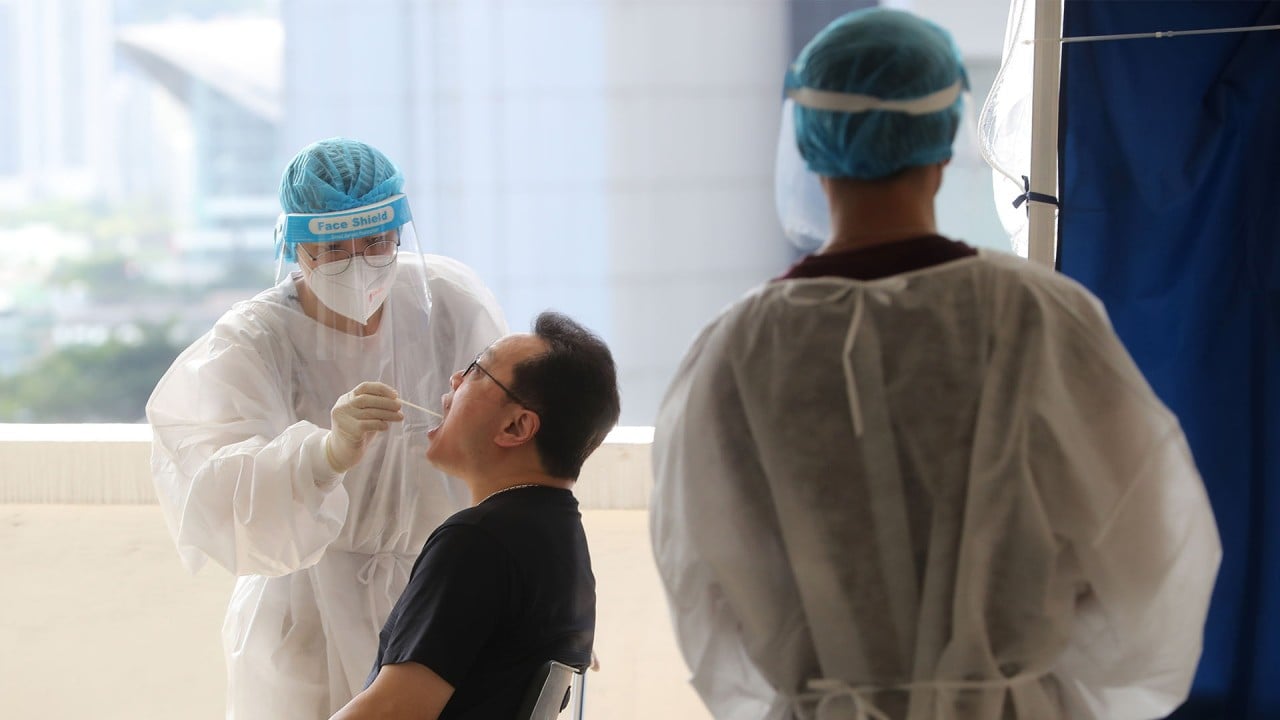
05:38
What started Hong Kong's third Covid-19 wave?
Andy Kwan Cheuk-chiu, director of the independent think tank ACE Centre for Business and Economic Research, is not convinced the GBA will help bring Hong Kong tourism back to life.
For one thing, he pointed out, mainlanders were aware that not all Hongkongers welcomed them.
The influx of mainland visitors in recent years resulted in hostility towards them and complaints from residents that places like Causeway Bay, Mong Kok and Tsim Sha Tsui had become overcrowded.
To cater to mainlanders, Kwan said, dozens of luxury chain stores and pharmacy outlets had popped up in some areas, raising retail rents beyond the reach of budding entrepreneurs.
‘We are dying’: Hong Kong tourism industry begs government to restart travel
The anti-mainland sentiment also led some popular state-owned online travel platforms in the GBA, such as Ourtour.com and Dafang Tour, to stop marketing Hong Kong in the second half of last year.
Even today, some of them promote trips to places like Singapore, Japan and Malaysia, but not Hong Kong.
Ricky Tse Kam-ting, president of the Hong Kong Inbound Tour Operators Association, is confident mainlanders, especially from Guangdong, will return to shop, eat, attend pop-up events and visit new attractions.
“The problem is not attracting them, but ensuring that firstly, we have the coronavirus under control and secondly, we can rebuild trust that they are welcome in the city,” he said.
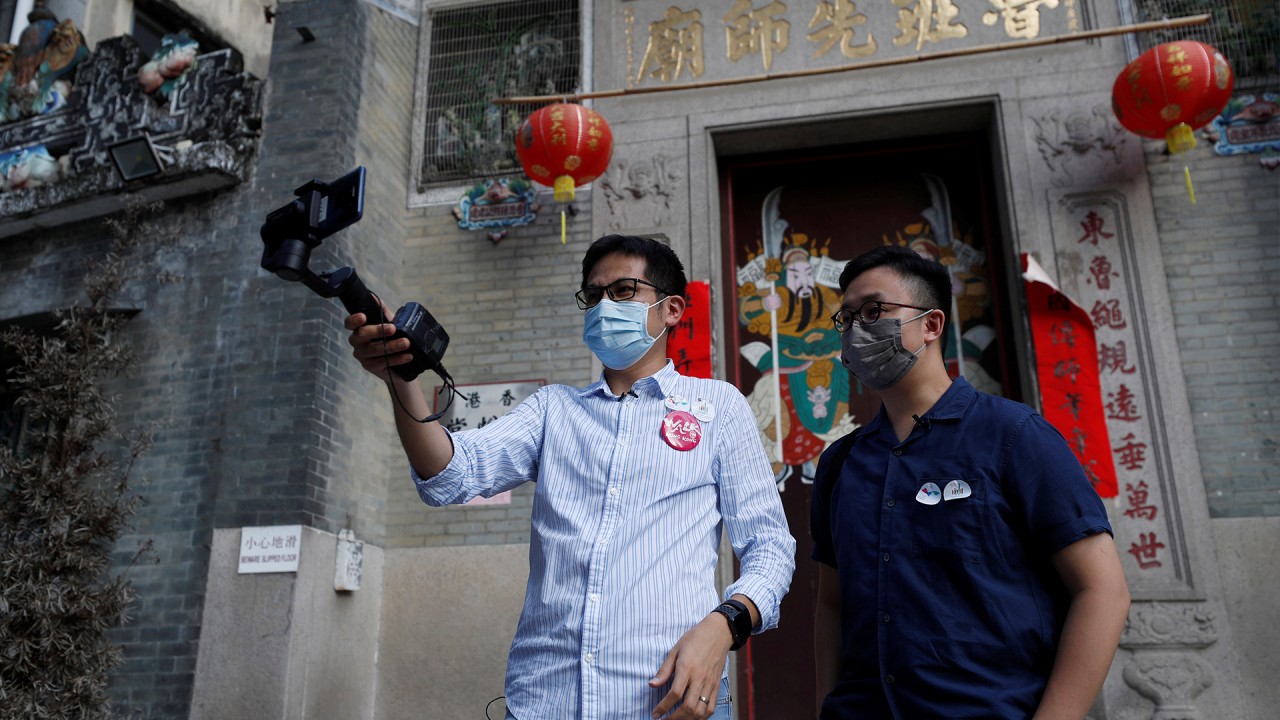
02:50
HK tourism company offers virtual tours to survive Covid-19 pandemic
Many mainland travellers would also consider Hong Kong and Macau as Beijing had been encouraging citizens to spend in China, he added.
Hong Kong Tourism Board executive director Dane Cheng Ting-yat said the pandemic had transformed the tourism landscape, and the board would conduct a thorough review of Hong Kong‘s tourism positioning and marketing strategies. He expects the GBA and some other short-haul markets to be the first to reopen to Hong Kong.
More work, study options in Greater Bay Area, but will the youth go?
Think tank chief Kwan said that in future, GBA travellers were likely to make short visits, with many doing day trips, and might not spend as much as the tourism industry hoped.
Even business travellers may not come in as large numbers as before, as more transactions are likely to move online.
“Covid-19 has changed many things, even how people travel and communicate,” Kwan said, adding that there might be fewer face-to-face business meetings and interactions over drinks or meals.
“There will still be business travel, but in terms of personal contact or social contact, there might be much less than before,” he said.
Rather than bank too much on tourism, he felt Hong Kong should do more to safeguard its status as an international financial centre, a role Beijing also envisaged for the city under the GBA plan.

03:20
Bali to remain closed to international travellers until the end of 2020
Ever the optimist, businessman Zeman is confident Hong Kong will not only entice mainlanders, but also remain a critical stopover for visitors from other countries heading to the mainland.
He said the city should be positioned as a world class arts and culture hub in the GBA and do more to develop medical tourism as well.
“The West Kowloon Cultural District will be a prominent offering upon completion in the next few years and medical tourism is important to mainland visitors,” said Zeman, who chairs the massive arts hub’s commercial letting panel.
Far from being competitors for visitors, he felt the 11 cities in the GBA had potential to become a “a package offer” attracting global tourists.
Professor Brian King, associate dean at Polytechnic University’s school of hotel and tourism management, said Hong Kong’s hotels, which have suffered this year, had a role in wooing mainland visitors too.
Noting that some hotels were taking advantage of their prolonged low season to renovate, he said new features in dining or design would attract more guests from the GBA when borders reopen.
Hotels can also look to the GBA market to extend their increasingly popular staycation deals.
“The pandemic has prompted people to travel closer to home, which is exactly what the Greater Bay Area captures,” he said.





